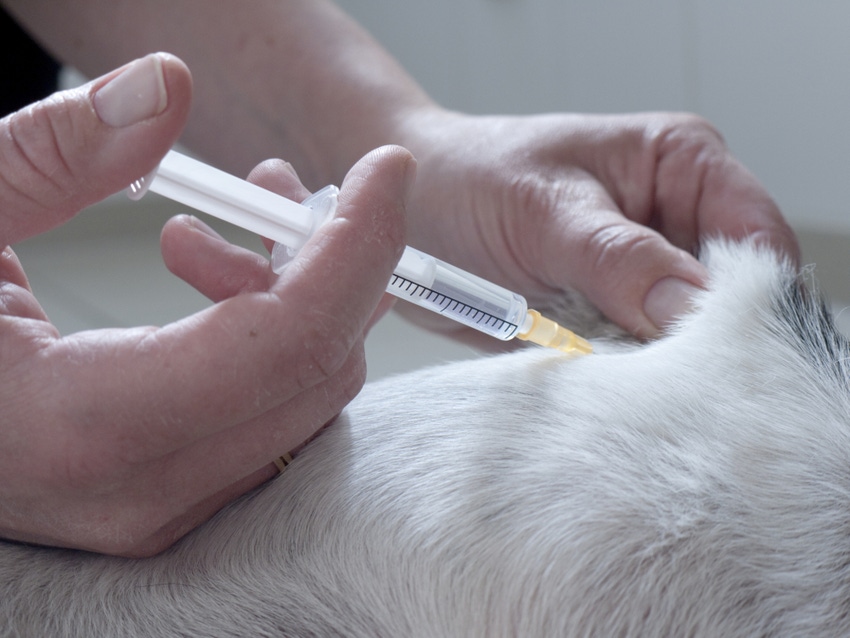- Nutrition & Health
- Market News
- Swine Health and Nutrition
- Dairy Health and Nutrition
- Beef Health and Nutrition
N&H TOPLINE: Changing antibiotic landscape in animal ag scrutinized
Intertwined in concerns over antibiotic resistance and use in food animal production are questions over collecting and interpreting antibiotic usage data.

Antibiotic use in food animal production is a "vast, interdisciplinary" topic, Dr. Stacy Sneeringer with the U.S. Department of Agriculture's Economic Research Service (ERS) said in opening a workshop on "Challenges to Changing Antibiotic Use in Food Animal Production: Economics, Data & Policy" that ERS jointly hosted with the Farm Foundation in Washington, D.C.
Setting the stage for the afternoon discussion, keynote speaker Dr. Jim MacDonald, chief of the ERS Structure, Technology & Productivity branch, noted that there are widespread and growing concerns about antibiotic usage that stem from concern over antibiotic resistance that is primarily derived from human use but may also be influenced by animal use.
In response to those concerns, MacDonald said European countries have adopted stricter restrictions on antibiotic use than those so far implemented in the U.S., which can lead to increasing trade issues.
He added that a move toward "no antibiotics ever" programs, primarily in the poultry industry, is a private response to those concerns, but those private responses are eliciting secondary regulatory interventions from USDA through labeling requirements.
Intertwined with those concerns, MacDonald said, are questions over data, including: the quantity of antibiotics used, how that use affects resistance, who collects data on usage (which also includes privacy concerns with data collection), etc.
According to MacDonald, just asking producers these questions through surveys is a useful technique, but there is a diminishing value to continuing surveys. Because of this, he said the focus is shifting to understanding the impact on the markets of different interventions.
Iowa State University associate professor of economics Dr. Lee Schulz addressed the implementation effects the Veterinary Feed Directive (VFD) policy has had on pig farmers, veterinarians and feed providers.
According to Schulz, based on surveys conducted in Iowa before and after the Jan. 1, 2017, VFD implementation date, VFDs have really changed how many swine vets do business but have created better relationships with producers, nutritionists and feed suppliers.
The surveys showed that in the swine industry, the veterinarian/client/patient relationship (VCPR) requirement was not considered to be a challenge, while complying with the VFD rules were seen as moderately burdensome, Schulz said. The surveys showed that independent swine producers perceived higher implementation costs for the rules than contracted or integrated growers perceived.
Schulz said veterinarians should be congratulated for all the work they did to prepare for VFD implementation through training and education of clients, and that work still continues.
Some of the largest performance effects noted by the swine industry have been in the nursery phase, Schulz said, noting that offsets include increased use of vaccines, improvements in biosecurity and increased use of non-antibiotic additives such as probiotics, prebiotics and botanicals. However, Schulz said some of those alternative products need more rigorous testing due to variable responses, which can be influenced by other management and husbandry practices.
Similar to the swine industry survey Schulz helped conduct, Kansas State University researchers also conducted a set of surveys of the beef cattle sector before and after the VFD implementation date.
Schulz briefly touched on a few points from the Kansas State research, noting that beef cattle producers did not seem concerned about VFDs pre- or post-enactment, and a common producer sentiment expressed in the surveys was the ultimate goal of making beef as safe as possible.
Meanwhile, Cornell University researchers worked with New York dairy farms on their experiences with VFD implementation.
Cornell's Kelsey O'Shea said in the dairy sector, VFD implementation has promoted closer relationships with vets, shifts from treatment to prevention (especially with calves around weaning), more capital investment in facility design and better management.
While those conclusions echoed some of what Schulz discussed with the swine industry results, O'Shea noted that some large dairies have expressed concerns over the availability of antibiotics. Some feed mills are carrying a reduced supply of in-feed antibiotics because they cannot justify carrying the inventory due to its shelf life. So, when a veterinarian prepares a VFD and sends it to the feed mill, some dairies have had to wait up to three weeks for delivery of a VFD medicated feed for a specific health concern.
O'Shea added that the current dairy market economic scenario is adding to these concerns as feed mills are already carrying receivables balances for some dairy farms.
About the Author(s)
You May Also Like



